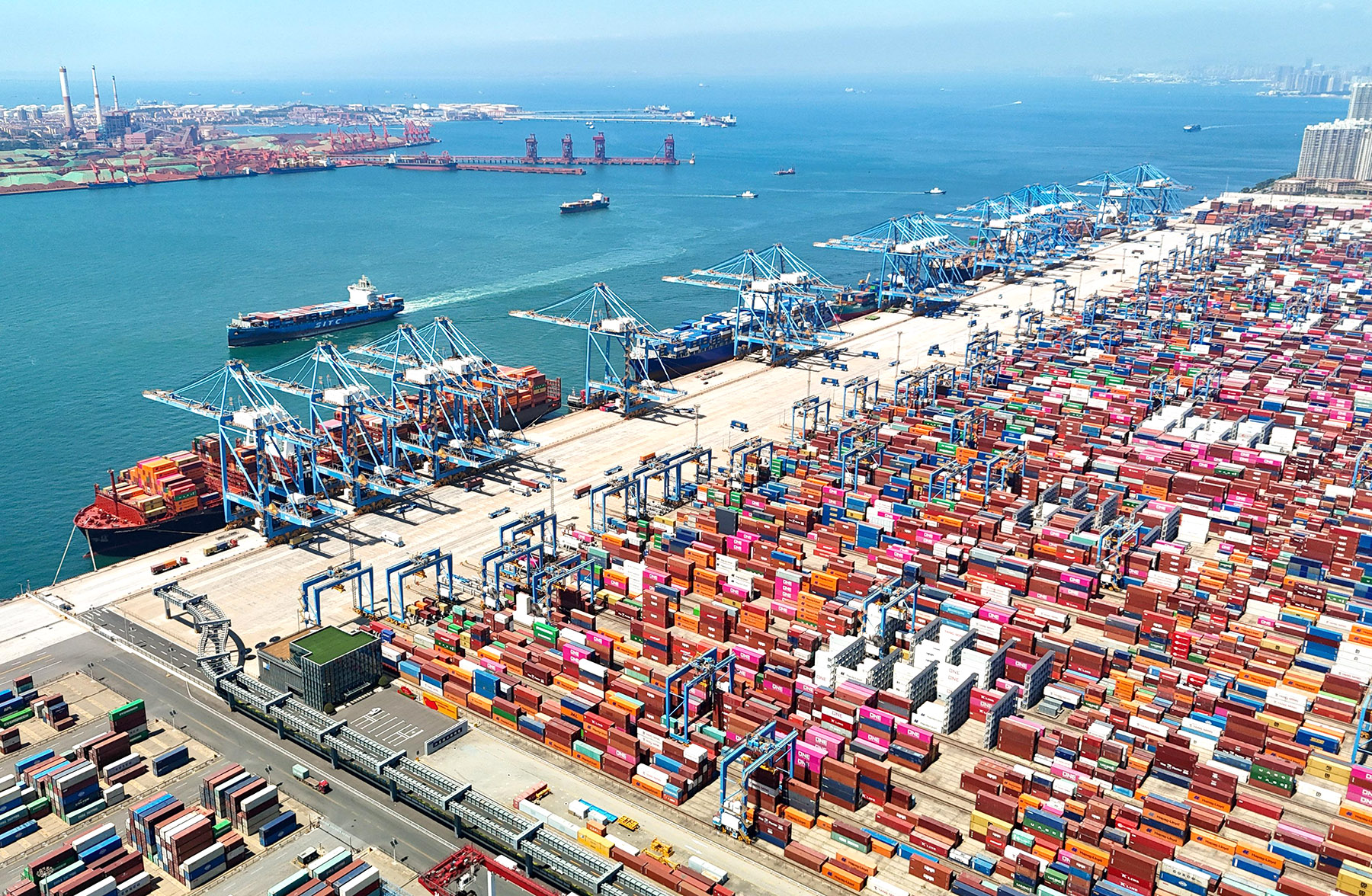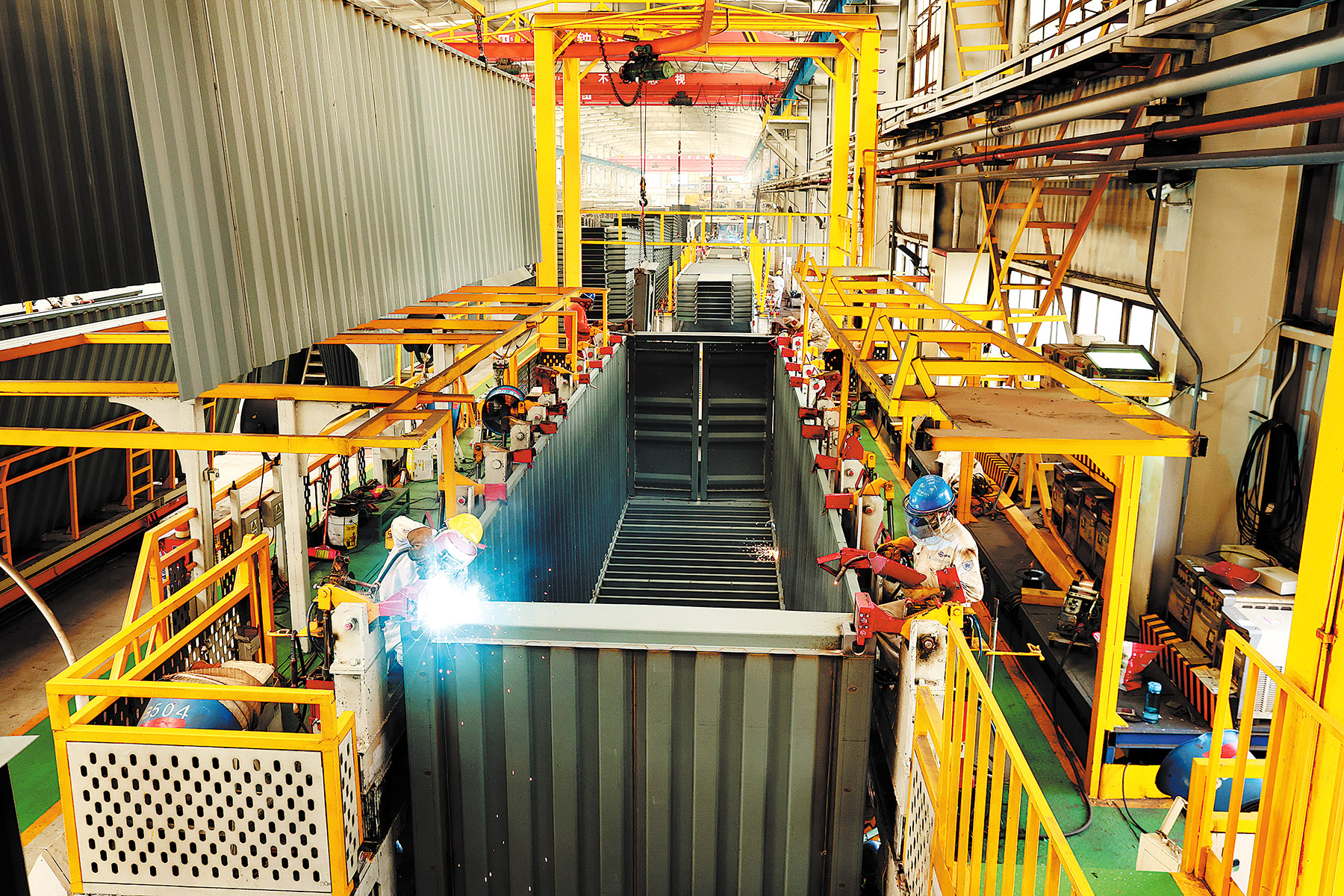Containers in tight supply as vessels reroute to stave off delays in Red Sea

Lu Chao, head of the marketing department at Zhejiang Xinqiaoyuan International Logistics Co, has been facing a tough time over the past five weeks.
Though her freight forwarding company, which is based in Ningbo, Zhejiang province, has successfully booked cargo space on ships, securing shipping containers for loading goods has proved difficult.
To locate empty containers, Lu and her team members have been diligently making online reservations, adhering to a strict daily schedule.
READ MORE: Merchant vessel sinks in Red Sea after Yemen's Houthi attack
"If we don't get them today, there won't be any more available. We will start again tomorrow afternoon," said Lu.
She said booking containers online has become a key daily task, sometimes even requiring assistance from all the staff members of the company.
Sharing a similar experience, Guo Xinxin, head of customer service at Zhejiang Xiecheng International Freight Forwarding Co in Yiwu, Zhejiang, said a significant portion of her daily workload involves scrambling for containers.
"Container truck drivers also have to be quick. Once they receive the pickup bar code, they must relentlessly search for empty containers. If they are too slow, the containers could be reassigned to other companies," said Guo.
The tight supply of containers is primarily due to ships rerouting and delays caused by the ongoing tensions in the Red Sea region, along with a surge in demand driven by a large number of new container vessels being built and launched, said Li Muyuan, executive vice-president of the China Container Industry Association in Beijing.
To meet the shipping needs of foreign trade companies and improve the efficiency of container use, some shipping companies have reduced the time to pick up empty containers from 48 to 72 hours previously, to just 24 hours now, said Li.
Jin Xiaomin, chairman of Zhejiang Kingston Supply Chain Group Co Ltd, another Yiwu, Zhejiang-based exporter, said due to a shortage of containers, several exporters and shipping companies have begun buying their own.
Prices of secondhand containers have also soared. The cost of a used container was around 15,000 yuan ($2,068) at the beginning of the year, but has surged to 23,000 yuan early this month.
At Ningbo Xinhuachang International Containers Co, a container manufacturer based in Ningbo, Zhejiang province, trucks loaded with bamboo wood flooring and steel coils continue to arrive at its workshops. The company said that the raw materials in its warehouse can only meet production needs for two to three weeks.
Ningbo Xinhuachang is now operating on a two-shift schedule to meet order volume. Two months ago, it was operating a single shift.
"Our production capacity is currently at an unprecedented high since the founding of our company. There is a possibility that in June and July, we may even surpass the levels achieved in May," said Zhang Zhuohui, the company's assistant president.
This is because of high demand from clients at home and abroad, and the order volume is substantial and urgent, said Zhang.
The sudden surge in orders has also led to a supply shortage of upstream raw materials. Additionally, the rainy season in certain parts of China is affecting the situation, making the supply of bamboo wood flooring particularly tight, he added.

In addition to shipping traditional goods like household appliances, machinery and clothing through containers, many automakers have also relied heavily on these freight boxes to ship their vehicles abroad, forced by a situation of insufficient car carriers. This has also added to high demand for containers, said Liu Shuang, an official at Beilun Customs, a branch of Ningbo Customs.
For instance, Ningbo Port exported a total of 64,000 vehicles in the first four months. Of these, around 50,000 were shipped using containers. This has also driven an increase in container usage.
Affected by the extended international shipping cycle on certain routes, manufacturers in Fujian province exported 526 million yuan worth of new containers from January to April, up 686 percent year-on-year, data from Xiamen Customs showed.
China's container throughput at its ports rose 9 percent year-on-year to 104.03 million twenty-foot equivalent units between January and April, according to data released by the Ministry of Transport in May.
Major players like France's CMA CGM Group, Germany's Hapag-Lloyd AG and Denmark's Maersk Line have all reported substantial rate increases in recent months, with some hikes reaching up to $2,000 and several routes experiencing over 50 percent increases. These adjustments span numerous routes connecting Asia with Europe, North America and South America.
For example, CMA CGM said that starting May 15, the rate for a TEU on the Asia to North Europe route would be adjusted to $2,700, and the rate for a 40-foot container (FEU) will increase to $5,000, which represent increases of $500 and $1,000, respectively, compared with rates implemented on May 1.
Maersk started to impose a peak season surcharge on routes from Asia to the west coast of South America, Central America and the Caribbean from June 1. The surcharge is $1,000 for a TEU and $2,000 for an FEU.
As various shipping companies announced price increases, including surcharges, the freight rates from Ningbo Port to some ports in Latin America have jumped from about $2,000 per FEU in the offseason to $9,000-$10,000 this month, said Pan Jiangbo, a business manager at Ningbo Qianheng International Logistics Co, another Ningbo-based freight forwarder.
Similarly, the basic freight rates to Europe in early June have risen by nearly $1,000 compared to May, reaching close to $6,000 per FEU, and may even rise, said Pang.
The continued hike in freight rates is being mainly driven by operational safety concerns in the Red Sea region, the Paris 2024 Olympic Games (from July 26 to Aug 11) and a surge in demand for goods in many regions across the world. Freight rates are likely to rise in the short term, he added.
Yang Changyong, a researcher with the Academy of Macroeconomic Research under the National Development and Reform Commission, said the current scenario is expected to persist for another two or three months.
July and August mark the conventional peak shipping season, while August and September represent the busy season for global e-commerce businesses.
ALSO READ: China's cross-border e-commerce records exponential growth
Anticipating uncertainties in trade policies due to the US general elections later this year, several US retailers and businesses have rushed to order products from Chinese exporters to replenish stocks, Yang said.
Generally, long-term contracts offer prices that are lower than spot market rates, but when the former are much lower than the latter, shipping companies prefer to fulfill spot contracts.
Consequently, the management and allocation of low-priced space are stringently controlled, said Lin Meng, director of the Modern Supply Chain Research Institute at the Beijing-based Chinese Academy of International Trade and Economic Cooperation.
Overall, the freight forwarding sector is witnessing higher earnings compared to the offseason, though far from reaching the peak of 2021 when global supply chains were disrupted by the COVID-19 pandemic and obstructions in the Suez Canal, Lin said.
Whether the rates will rise by Christmas season depends on global developments. Judging from the current circumstances, the situation of high freight costs will not last particularly long, she added.


